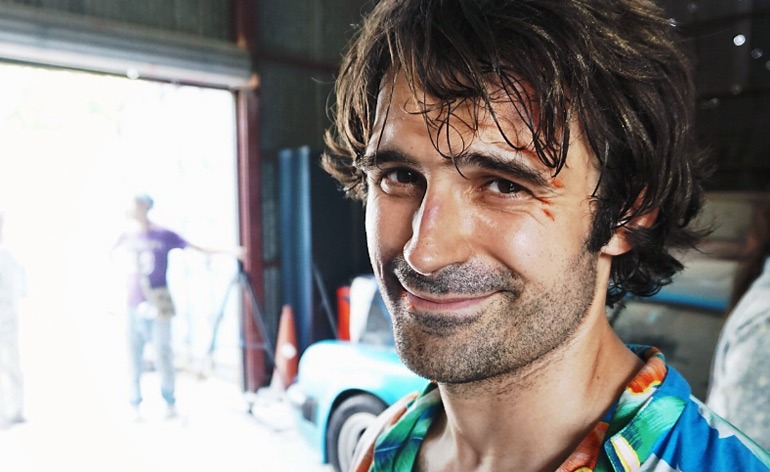
Сколько актеров – мастеров боевых искусств по всему миру могут рассказать нам о том, что были вдохновлены Джеки Чаном? Неисчислимое количество, но Эрик Джакобас пошел дальше, и рассказал нам, как он сделал карьеру из этого!
Вдохновленный умением Джеки смешивать зубодробительный экшн и комедию, Эрик стал соучредителем The Stunt People в 2001 году в своем стремлении сделать такие же кунг-фу комедии на Западе. Прошло четырнадцать лет с тех пор, как The Stunt People выпустили свою первую полнометражную экшен-комедию "Contour". Позже они объединились с бывшим "Могучим Рейнджером" Джонни Йонг Бошем для триллера Death Grip, и выпустили целую пачку короткометражных фильмов на YouTube, в том числе веселый Rope-A-Dope. Между делом, Эрик успел сыграть роль Куртиса Страйкера во втором сезоне популярного веб-сериала Смертельная битва: Наследие!
Сегодня, Джакобас продолжает работу в The Stunt People, и принимает участие в крупных проектах, среди которых есть "Крепкий орешек: Хороший день, чтобы умереть".
Брэд: Эй, Эрик! Спасибо, что уделили время для интервью. Надеюсь у вас все хорошо?
Привет, Брэд! Да, все прекрасно!
Здорово! Итак, давайте начнем с самого начала, если вы не против. Когда Вы родились?
Конечно не против! Я родился 29 марта 1982.
Какой ваш рост и вес?
Мой рост 170 см в лучшие дни :-), вес 77 килограмм.
Когда вы начали заниматься боевыми искусствами, и какими именно?
Я немного занимался каратэ, когда мне было около 12, но бросил, потому что это была детская группа (смеется), и до 20, я практически не занимался боевыми искусствами, хотя и была гимнастика. Мне хорошо давалась гимнастика. Также, в колледже занимался прыжками в воду, что стало хорошим подспорьем в боевых искусствах. Кроме того с 13 лет я занимался гиревым спортом, будучи физически развитым ребенком. Когда я поступил в киношколу Сан-Франциско, я просто открыл телефонную книгу и стал перебирать все школы боевых искусств сверху донизу. Мне понравилась школа тхэквондо под управлением Энди Люна. Он стал одним из первых членов The Stunt People, потому что я сказал ему, что хочу снимать фильмы, оказалось, что мы единомышленники.
Позже, я занимался хапкидо под присмотром Денниса Руэла, Рэя и Троя Карбонелов в 2004 году, где занимаюсь и по сей день. Деннис был также отличным дополнением к The Stunt People, потому что он привел с собой ребят вроде Троя и Рэя, и показал себя мастером своего дела. У каскадеров, есть тенденция сосредоточиться на экшене, теряя из виду актерскую составляющую, но Деннис никогда не забывал показать не только искусство боя, но и свою актерскую игру. Чем мы были все восхищены, и что послужило вдохновением для всей команды.
Итак, с чего началось шествие The Stunt People по миру кинопроизводства, что было истоком?
Ну, я вырос в 80-х годах, когда там был большой профицит на качественные боевики, и комедии. Кроме того у меня была огромная коллекция водевилей - Чарли Чаплин и Лорел и Харди, которые я мог смотреть дни напролет. Я был единственным ребенком в моей школе, кто мог цитировать Лорела и Харди (смеется). Так что сочетание комедий и боевиков 80-х годов с парнями, типа Ван Дамма повлияли на меня, мне захотелось сделать что-то подобное, и позже, я узнал, что кое-кто уже пришел к такому же выводу - это был Джеки Чан! В конце 90-х найти его фильмы в США было крайне трудно, вы не могли просто зайти в интернет и найти "Пьяный мастер 2", и не было ни YouTube, ни Центрального хранилища фильмов Гонконга. Увидев, что вытворяет на экране Джеки Чан, я подумал: "Как я могу сделать подобное?", А в 90-х, появился независимый телеканал (IFC) и Sundance Film Festival где стали крутить его фильмы, так что я подумал: "Мне бы увидеть эту «кухню», и я сам смогу создать подобное! ".
Удивительно! Получается, что The Stunt People эволюционировали с момента его основания в 2001году?
Первоначально, мы начали, как производственная компания, с командой из 7 человек. Иногда, трое из нас были задействованы на площадке, еще один снимал все это действо на камеру, а когда приходила его очередь "драться", то он передавал камеру другому. Это был чисто костоломный фильммейкинг, и наш первый фильм "Контур" был снят именно таким способом. Самое главное для нас был безостановочный экшн, и если это означает, что я должен был натянуть лыжную маску и вмазать сам себе, то я делал это (оба смеются). The Stunt People - заумное словцо, мы выбрали его по уважительной причине. Многие увидев нас говорят: "О, так вы, ребята, каскадеры?", и мы как-то должны объяснить, "Да, но мы также и кинопроизводители". За эти годы мы превратились из независимых трюкачей в востребованную команду со своим логотипом и внушительным портфолио. Мой бизнес-партнер Клейтон Барбер и я также сформировали нашу собственную компанию, которая будет служить в качестве основы, по существу, мы нанимаем съемочную бригаду для производственной части, а The Stunt People выполняют все трюки. Таким образом, TSP становится не только каскадерами, но и актерами на съемочной площадке.
Понятно! Какой совет вы могли бы дать в актерам бойцам, которые стремятся стать каскадерами или фильммейкерами?
Самое первое - Вы должны узнать, как сделать фильм. К счастью, теперь это очень легко сделать что, потому что у всех есть либо видеокамера, либо Gо-Pro или на худой конец телефон (я люблю проводить семинары "Как сделать боевик на вашем телефоне!") С такими вещами как Инстаграмм в настоящее время вы получите нужную информацию буквально за день, можете снять сами на камеру падения, удары ногами, и сальто, так чтобы они выглядели, как в кино, даже если это всего пятнадцатисекундный ролик. А если у вас еще есть и наработки с тренажерного зала, считайте, что у вас есть портфолио.
Но также все зависит от вашей цели. Если вы хотите быть каскадером, то ваша цель – хорошее портфолио с трюками. Если же вы хотите добиться того же, что и Деннис Руэл, то должны знать как снять фильм. Никто не придет и не скажет; "О’кей, ты никогда не снимался в фильмах, но у меня есть план, как сделать тебя звездой! ", этого не произойдет. Никто не сделает этого за вас, Вы должны создать себя сами, тем более, что сегодня есть так много учебников и бесплатных мастер-классов.
YouTube и социальные сети вывели в свет много талантов на поприще короткометражек.
Согласен. До появления YouTube, чувак, было ой как трудно! В 70-х или 80-х, если ты хотел стать настоящей звездой боевиков, то должен был показать себя в ринге, чтобы тобой заинтересовались и протащили в киноиндустрию. Много каскадеров тогда вышли с тхэквондо, каратэ и кикбоксинга, и если у тебя есть харизма, как у Ван Дамма, то ты мог бы стать кинозвездой.
Это точно! Расскажите, с какими проблемами вы сталкивались во время съемок?
Время, когда мы вынуждены бездельничать - вот основная проблема. Когда мы снимали "Контур", наш исполнительный продюсер просто сказал: "Хорошо, Эрик, вот $5000, иди и играй! ", а я ответил:" Ну, я не в курсе сколько продлятся съемки ", и он просто сказал, "Неважно. Фильм наш, так что просто иди и сделай это." Мы снимали где-то 120 дней по три или четыре часа в день. Таким образом, мы имели возможность потратить больше времени на проработку боевых сцен. Но теперь, например, с Rope-A-Dope 2, финальный бой мы сняли за один день. Для Голливуда, трехминутный бой снимается за один день, что вполне стандартно, потому что они снимают 30-секундные куски с разных углов одновременно. У нас нет таких возможностей поэтому мы вынуждены делать семьдесят или восемьдесят дублей за день, таковы реалии.
Кто-нибудь получил травму в тот день?
Да, Денис разорвал подколенное сухожилие, но вы не заметили этого. Он из тех парней кредо которых – "шоу должно продолжаться!", и я никогда не думал: "О, нет! Мы можем использовать только один из ударов Денниса в этой сцене ", все, что он сделал, вышло здорово. Это дйствительнопреанный свему делу человек. То же самое с Клейтоном, котрый в настоящее время занят постановкой боевой хореографии для "Creed" с Сильвестром Сталлоне.
Ух ты! Я впечатлен! Итак, в чем же отличие съемочного процесса между Rope-A-Dope и Контуром?
Ну, в Death Grip был очень плотный съемочный график, где на сцену боя выделялся один день. В полнометражном фильме ставки выше, потому что там просто больше сумма. С короткометражным фильмом можно проиграться подольше. Мы не ставили целью заработать с помощью Rope-A-Dope 2 на YouTube, целью было сделать лучший короткометражный фильм. Следующим мы планируем снять наиболее масштабный фильм в нашей фильмографии. Не факт, что это будет сиквел Rope-A-Dope, но кто знает.
Все же, какой из уже сделанных проектов ваш любимый?
Думаю вы знаете, что это "Rope-A-Dope" 1 и 2. Я очень горжусь обоими проектами, ведь они были очень амбициозными, а не просто "дураковаляние" в выходной день. Мы получили все разом, у нас был бюджет, было ограничение времени, был прокат на кинофестивалях. Для нас такое было впервые.
Вторая часть интервью будет опубликована несколько позже.
Источник: Kung-Fu Kingdom
Перевод: Максим Ковалишен
Метки: Contour, Rope-A-Dope, Rope-A-Dope 2, The Stunt People, Деннис Руэл, Джонни Йонг Бош, Клейтон Дж. Барбер, Эрик Джакобас



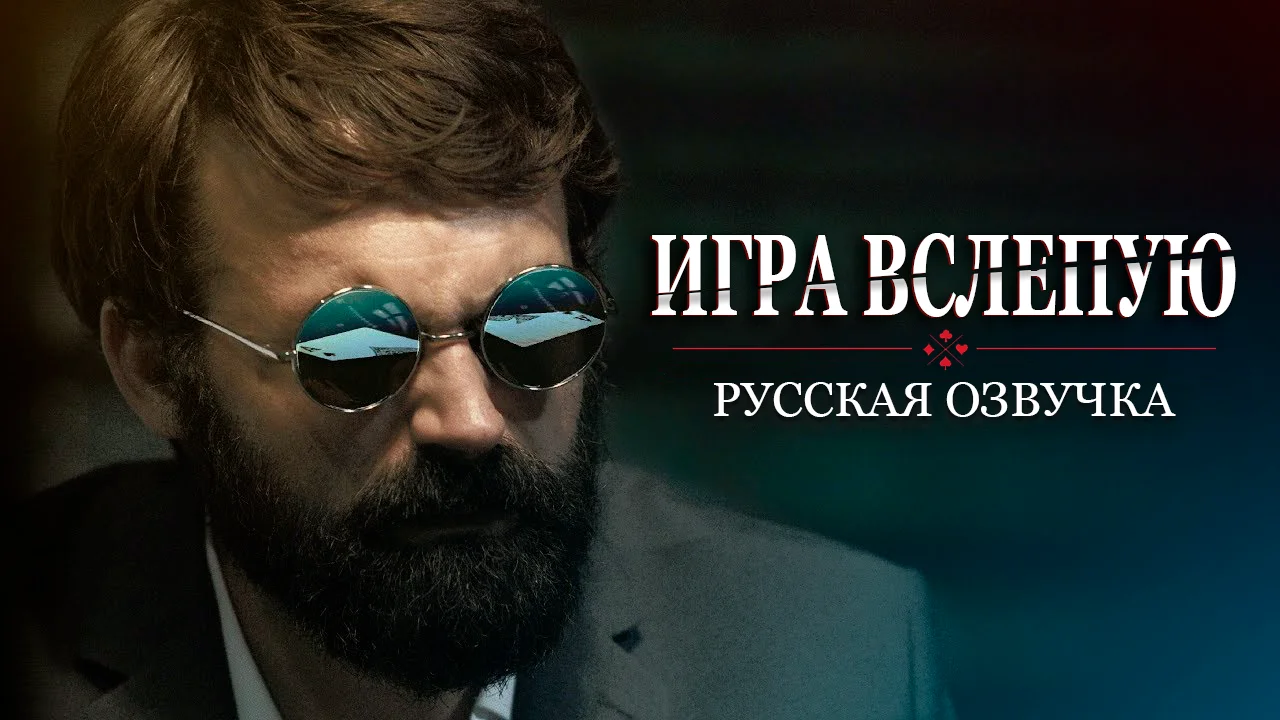

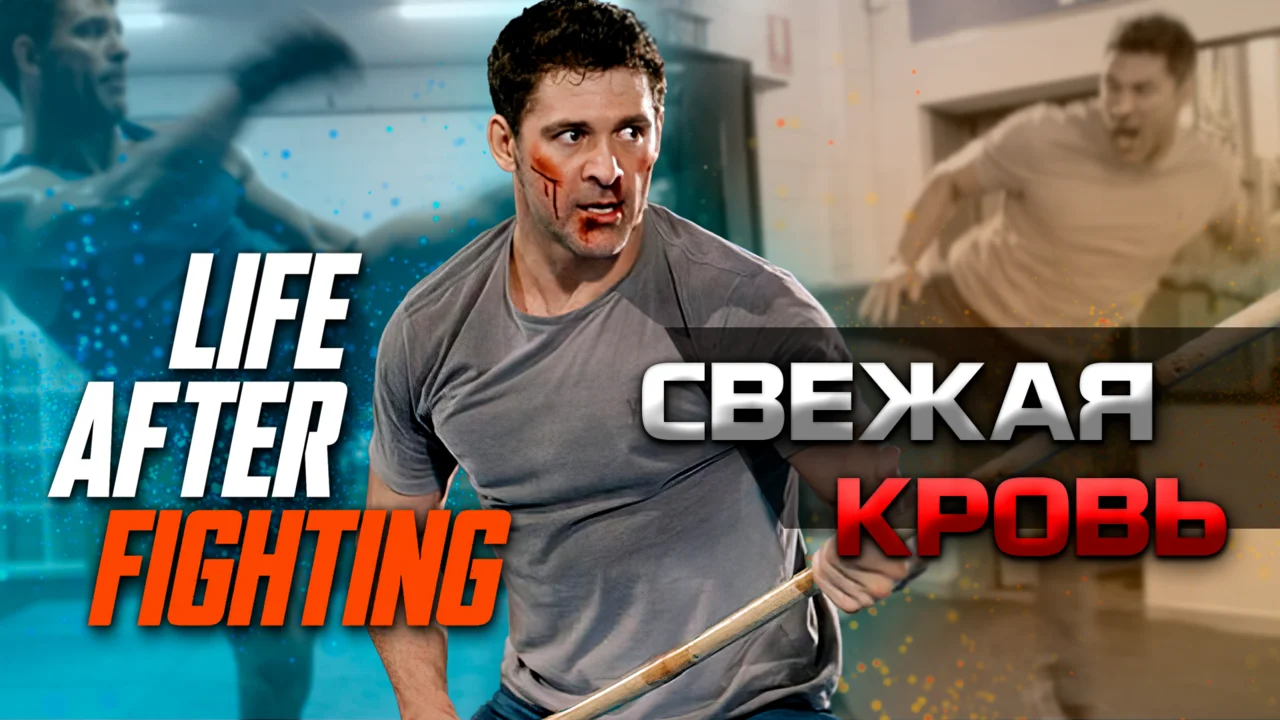
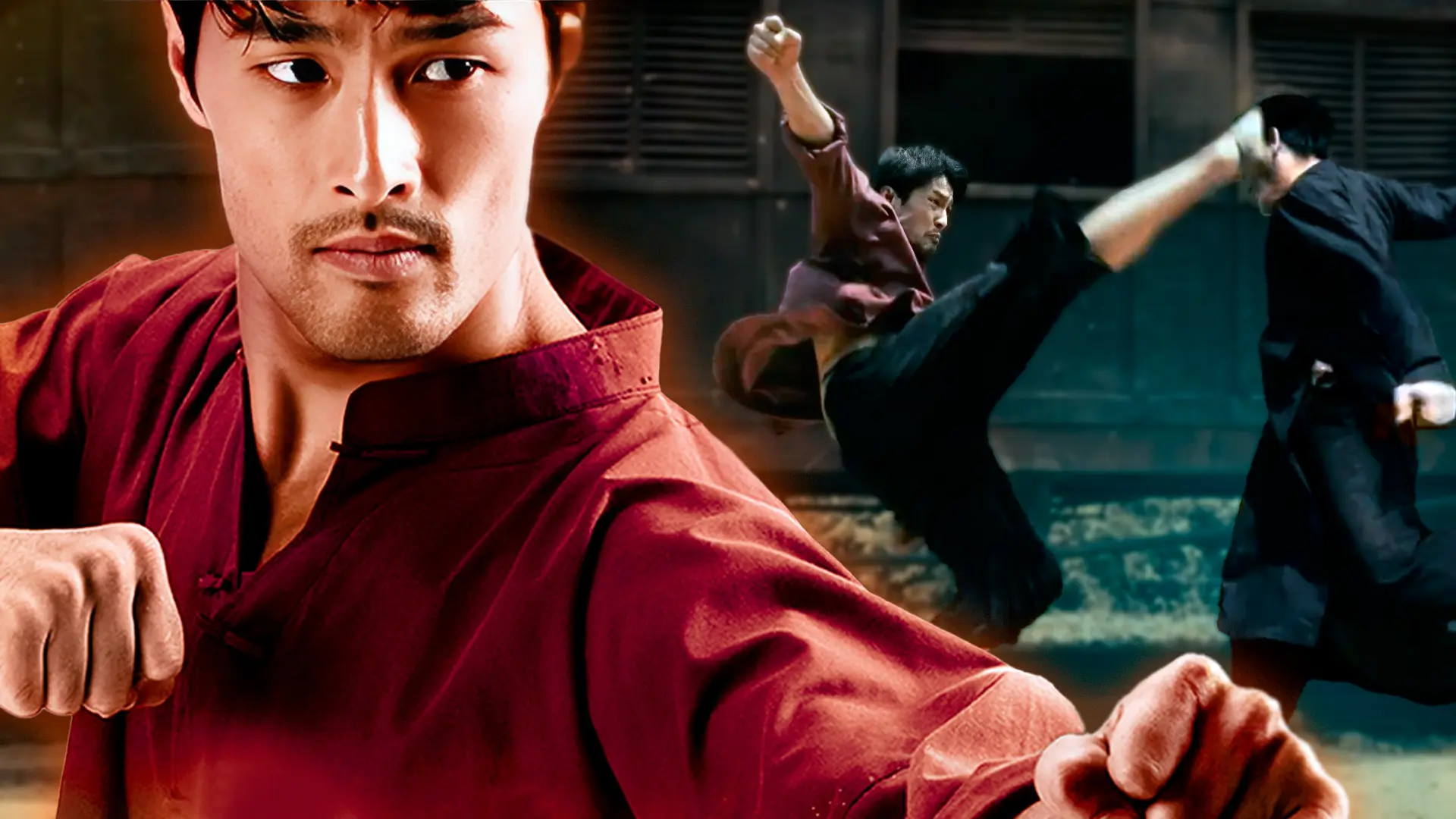
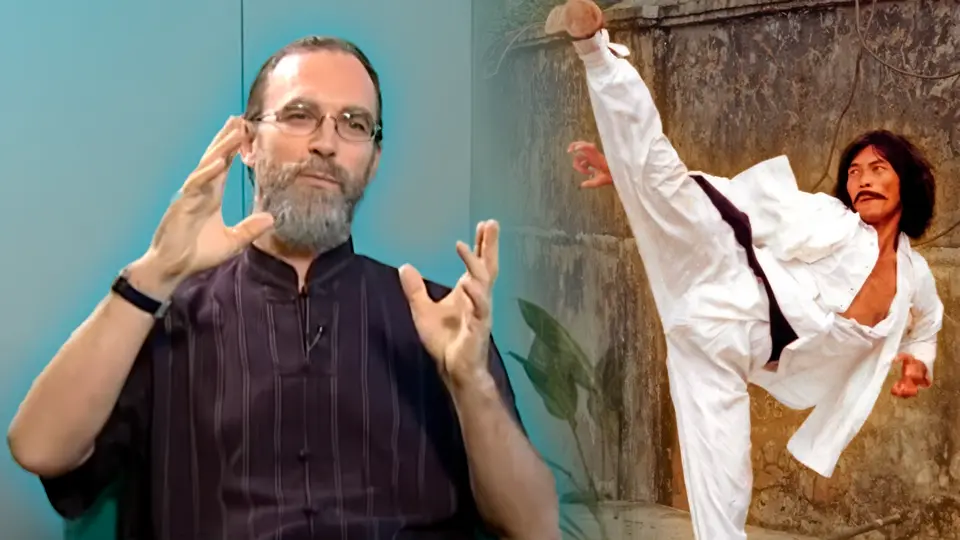




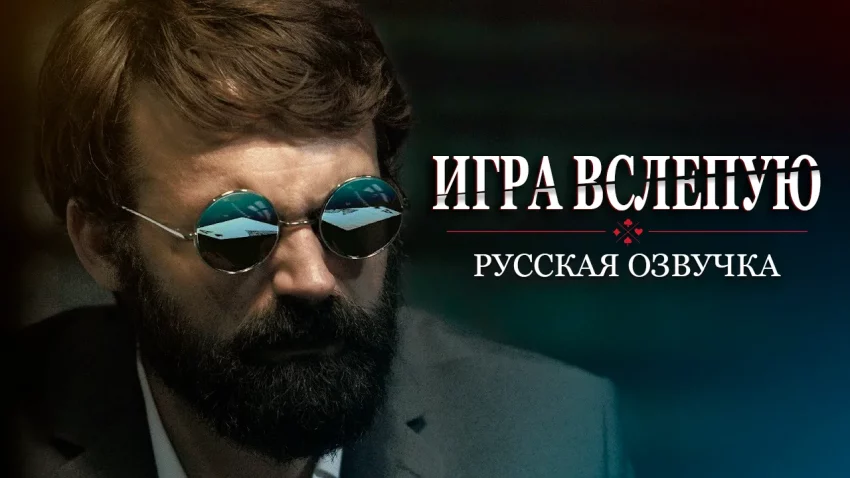



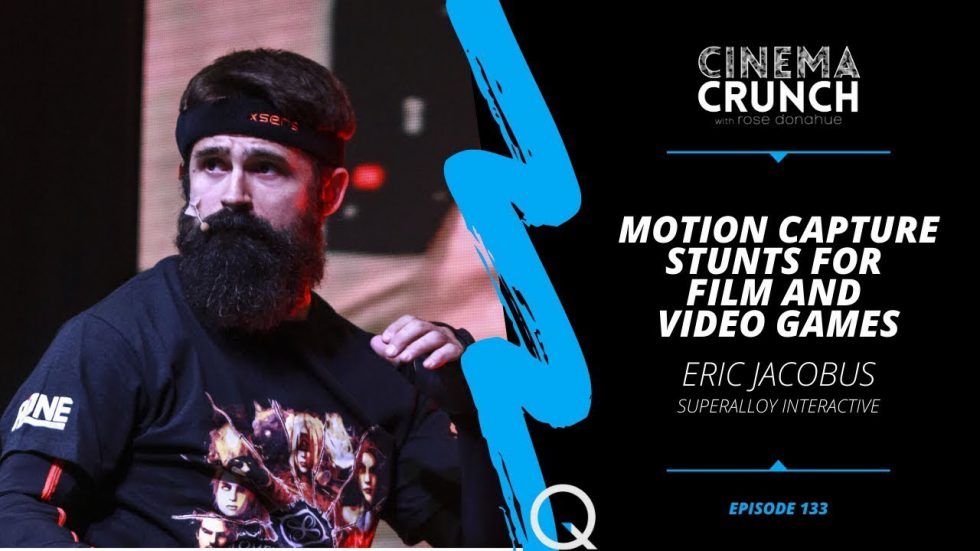
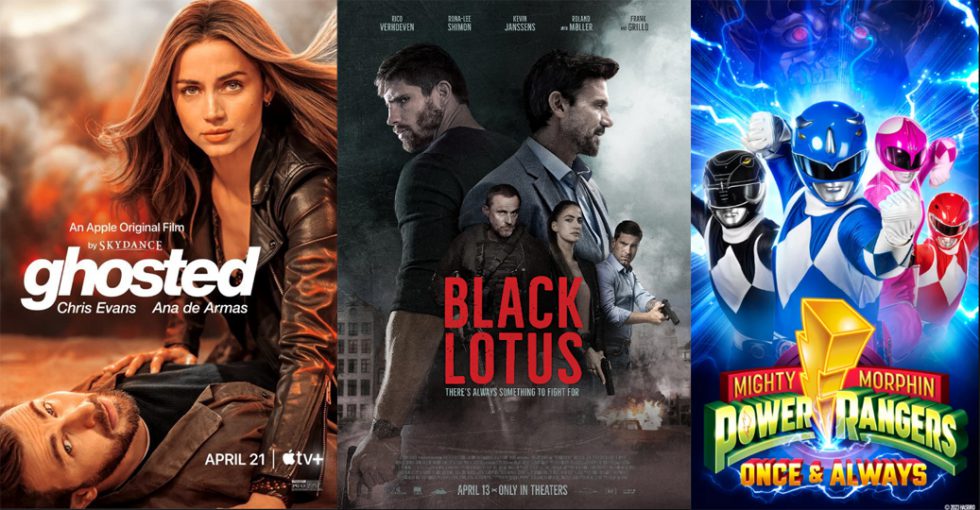
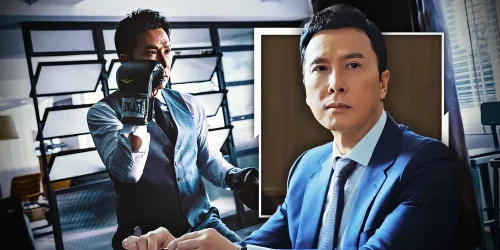
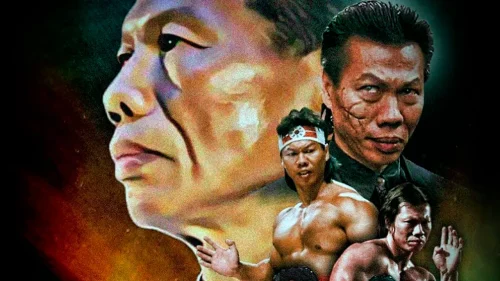
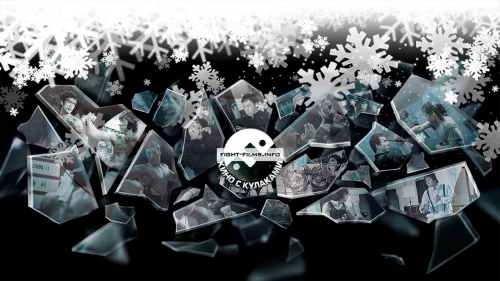
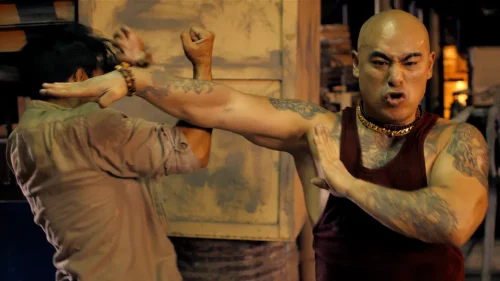


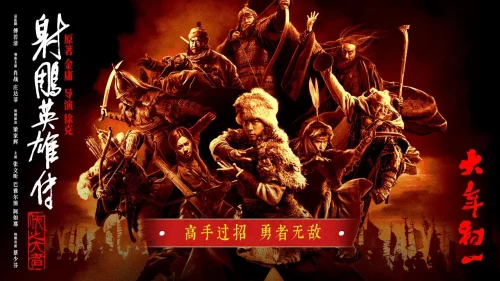
Интересно, что Эрик, по большому счету, долгое время боевыми искусствами-то и не занимался.